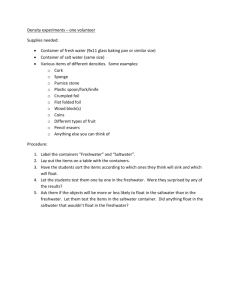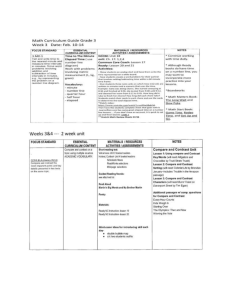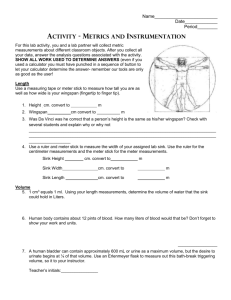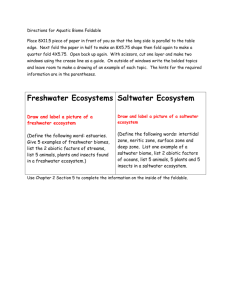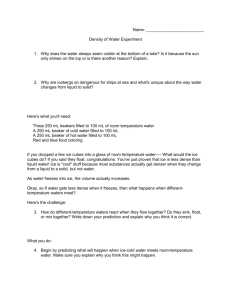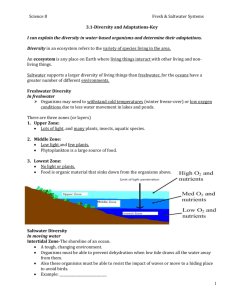Temperature Salinity and Density Lab
advertisement
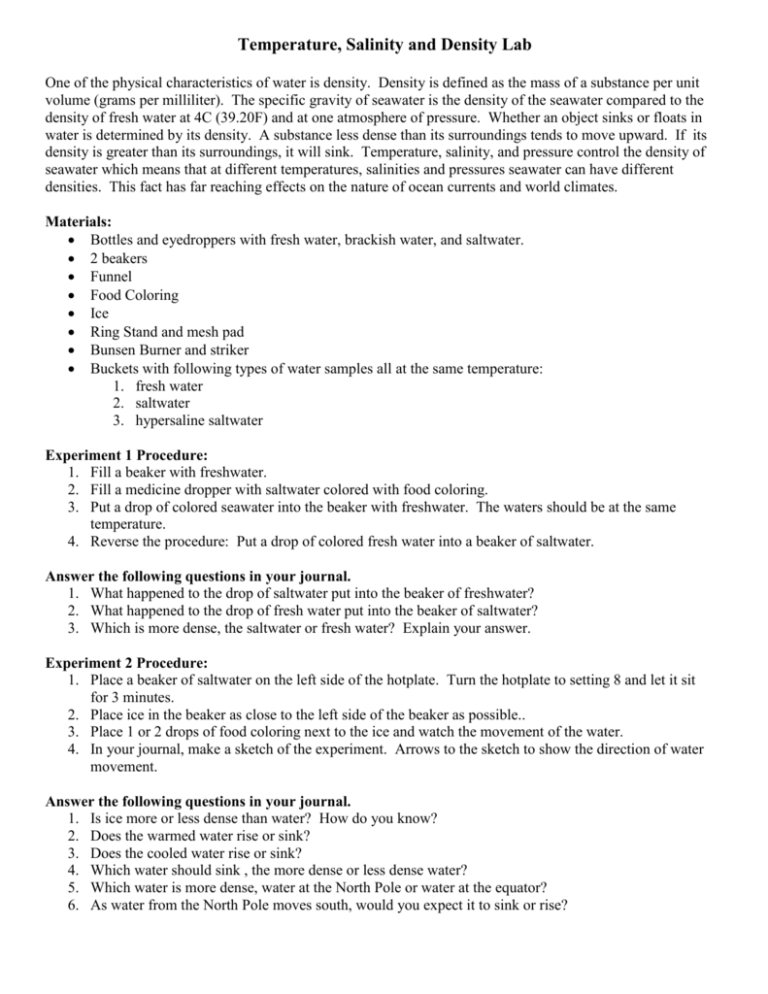
Temperature, Salinity and Density Lab One of the physical characteristics of water is density. Density is defined as the mass of a substance per unit volume (grams per milliliter). The specific gravity of seawater is the density of the seawater compared to the density of fresh water at 4C (39.20F) and at one atmosphere of pressure. Whether an object sinks or floats in water is determined by its density. A substance less dense than its surroundings tends to move upward. If its density is greater than its surroundings, it will sink. Temperature, salinity, and pressure control the density of seawater which means that at different temperatures, salinities and pressures seawater can have different densities. This fact has far reaching effects on the nature of ocean currents and world climates. Materials: Bottles and eyedroppers with fresh water, brackish water, and saltwater. 2 beakers Funnel Food Coloring Ice Ring Stand and mesh pad Bunsen Burner and striker Buckets with following types of water samples all at the same temperature: 1. fresh water 2. saltwater 3. hypersaline saltwater Experiment 1 Procedure: 1. Fill a beaker with freshwater. 2. Fill a medicine dropper with saltwater colored with food coloring. 3. Put a drop of colored seawater into the beaker with freshwater. The waters should be at the same temperature. 4. Reverse the procedure: Put a drop of colored fresh water into a beaker of saltwater. Answer the following questions in your journal. 1. What happened to the drop of saltwater put into the beaker of freshwater? 2. What happened to the drop of fresh water put into the beaker of saltwater? 3. Which is more dense, the saltwater or fresh water? Explain your answer. Experiment 2 Procedure: 1. Place a beaker of saltwater on the left side of the hotplate. Turn the hotplate to setting 8 and let it sit for 3 minutes. 2. Place ice in the beaker as close to the left side of the beaker as possible.. 3. Place 1 or 2 drops of food coloring next to the ice and watch the movement of the water. 4. In your journal, make a sketch of the experiment. Arrows to the sketch to show the direction of water movement. Answer the following questions in your journal. 1. Is ice more or less dense than water? How do you know? 2. Does the warmed water rise or sink? 3. Does the cooled water rise or sink? 4. Which water should sink , the more dense or less dense water? 5. Which water is more dense, water at the North Pole or water at the equator? 6. As water from the North Pole moves south, would you expect it to sink or rise? Experiment 3 Procedure: 1. Fill a beaker with ½ full of fresh water. 2. Place the funnel in the beaker so that the tip rests on the bottom. Carefully pour saturated saltwater into the funnel until the beaker is almost full. After the water movement has stopped you should have a two layered system with the very dense saltwater beneath fresh water. 3. Use the eyedropper to add a drop of brackish colored water to the fresh water. Observe the results. 4. Use the eyedropper to add a drop of colored saltwater down in the very salty layer. Observe the results. Answer the following questions in your journal. 1. Which water mass sinks, the more or less dense water? 2. Does seawater become more or less dense when the salinity is decreased by adding freshwater? 3. Will water from the Mississippi River stay on top of or sink as it flows into the Gulf of Mexico? Why? 4. Would the water from Laguna Madre during the summer (with higher salinity than the gulf of Mexico) stay on top or sink as it enters the Gulf of Mexico? Why? 5. Write a paragraph which relates temperature, salinity and density to the movement of water masses. Use what you have learned in this lab. This part is very important (it will be most of your grade and maybe even all of your grade), so spend some time and thought on your answer.

